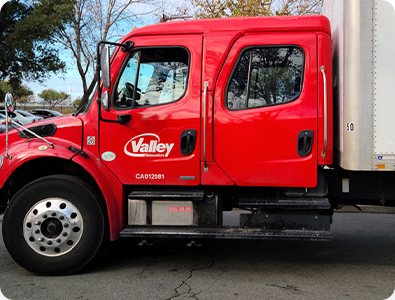Relocating a business is no small feat; it’s a complex endeavor that demands meticulous planning, unwavering attention to detail, and exceptional organization. Commercial relocations, whether prompted by growth, a change in location strategy, or other factors, are pivotal moments in a company’s journey. The decisions made and actions taken during this process can significantly impact a business’s efficiency, productivity, and long-term success.
A stress-free commercial relocation experience is not an unattainable dream but a well-orchestrated reality that, when executed correctly, can foster growth and transformation. In this comprehensive guide, we will delve deep into the top considerations for achieving just that—a smooth, efficient, and stress-free commercial relocation experience. Whether you’re moving your small startup to a new office space, relocating a well-established enterprise, or expanding to new markets, the principles outlined in this guide will serve as your roadmap to navigate the often intricate path of commercial relocation.
This guide is designed to be your trusted companion, offering insights, strategies, and actionable advice to tackle every facet of the relocation process. From the initial planning stages to post-move evaluation and adaptation, we will explore the critical elements that can make the difference between a chaotic upheaval and a well-managed transition. By the time you finish reading, you will be equipped with the knowledge and tools to not only minimize the stress associated with commercial relocation but also seize the opportunities it brings for growth, innovation, and a renewed sense of purpose.
Planning for Success
Successful commercial relocation begins with a well-thought-out plan. Here’s what you need to know:
Establishing a Timeline
The Importance of a Well-Defined Schedule
A well-defined timeline is the backbone of any successful commercial relocation. It sets the pace and helps you coordinate all aspects of the move. To create a realistic timeline, start by identifying key milestones and deadlines. Consider the size of your business, the complexity of the move, and any specific requirements related to your industry.
One crucial aspect of a timeline is contingency planning. While you aim to complete the move on schedule, unforeseen challenges may arise. Allow for some flexibility to accommodate unexpected delays or issues that might pop up.
Creating a Realistic Timeline
Creating a realistic timeline involves breaking down the move into phases. Consider factors like packing, transportation, setup at the new location, and potential downtime for your business. Assign specific timeframes for each phase, and don’t forget to allocate additional time for tasks that could take longer than expected.
Assembling a Relocation Team
Identifying Key Team Members and Their Roles
Your relocation team plays a critical role in ensuring a smooth transition. Identify key team members, including project managers, department heads, and employees who will have specific relocation responsibilities. Each member should have a clear understanding of their role and responsibilities throughout the move.
Establishing Clear Communication Channels
Effective communication is paramount during a commercial relocation. Create clear and efficient communication channels to keep the entire team informed and aligned. Regular meetings and updates will help address concerns and address any issues that may arise during the relocation process.
Budgeting and Financial Considerations
Managing the financial aspects of a commercial relocation is a crucial element of success. Let’s delve into it:
Cost Estimation
Factors to Consider When Estimating Costs
Cost estimation is a multifaceted process that involves considering various expenses. These may include leasing or purchasing a new property, transportation, packing materials, labor, and temporary storage. When estimating costs, it’s essential to consider factors such as the size of your business, the distance of the move, and the specific needs of your industry.
Allocating a Budget for Unexpected Expenses
No matter how meticulous your planning is, unexpected expenses can still arise during a commercial relocation. To safeguard your budget, allocate a portion for unforeseen costs. This contingency fund can help you address issues that weren’t initially accounted for, minimizing financial stress during the move.
Exploring Financing Options
Financing Strategies for Relocation
Financing a commercial relocation can be challenging, but several strategies can help you manage the costs. These may include traditional business loans, lines of credit, or exploring leaseback options for existing assets. Evaluate each strategy based on your business’s financial situation and long-term goals to make an informed decision.
Evaluating Cost-Saving Opportunities
In addition to financing, look for cost-saving opportunities that can help reduce your relocation expenses. For instance, consider selling or recycling outdated equipment and furniture. Negotiate with vendors and service providers for competitive rates and explore tax incentives or grants that may be available for businesses relocating to certain areas.
Selecting the Right Location
Choosing the right location for your business is a critical decision that can significantly impact your success. Here’s what you need to know:
Location Assessment
Understanding Your Business Needs
The first step in selecting the right location is to understand your business needs. Analyze your current location’s strengths and weaknesses and identify what you require in a new location. Consider factors like proximity to customers, suppliers, and competitors, as well as the demographic characteristics of the area.
Analyzing the Target Market
Your new location should align with your target market. Perform market research to identify areas with the highest potential for growth and revenue. Access to your customer base is essential, and a strategic location can give you a competitive advantage.
Site Selection
Criteria for Choosing the Perfect Location
When selecting a site for your commercial relocation, you’ll need to establish a set of criteria that align with your business goals. Consider factors such as accessibility, visibility, parking, and local amenities. Moreover, evaluate the cost of operating in the new location, including utilities, taxes, and maintenance.
Working with Real Estate Professionals
Real estate professionals can be valuable allies in your search for the perfect location. Commercial real estate agents can provide insights into available properties, market trends, and negotiation strategies. They can help you find the best location that meets your business’s specific requirements.
Legal and Regulatory Compliance
Navigating the legal and regulatory aspects of a commercial relocation is crucial. Here’s what you need to know:
Understanding Local Regulations
Permits and Licenses
Different locations may have varying permit and licensing requirements. Understanding these regulations is essential to ensure compliance. Consult with local authorities to determine what permits and licenses your business will need for the new location. Starting this process early can help prevent delays later on.
Zoning Laws
Zoning laws dictate how you can use the property you’re relocating to. It’s vital to assess whether the property aligns with your intended use. Consult with zoning authorities to make sure your business activities are permitted at the chosen location.
Compliance Checklist
Environmental Regulations
In some cases, environmental regulations may apply, particularly if your business handles hazardous materials or operates in sensitive areas. Complying with environmental regulations ensures that you avoid legal issues and potential damage to the environment.
Employee Safety and Welfare
Incorporating employee safety and welfare considerations into your relocation plan is essential. Make sure the new location meets safety standards, provides a comfortable working environment, and is accessible for employees with disabilities.
Technology and Data Transition
Technology and data are at the heart of modern businesses. Ensuring a smooth transition is paramount. Here’s what you should focus on:
IT Infrastructure Evaluation
Assessing the Current Tech Setup
Before the move, assess your current IT infrastructure. Identify equipment, software, and data storage solutions that need to be transferred. This evaluation will help you determine if any upgrades or changes are necessary for the new location.
Planning for Upgrades or Changes
Consider whether your business could benefit from technology upgrades during the relocation. This could involve faster internet connections, more efficient hardware, or adopting cloud-based solutions for data storage and management.
Data Security
Backing Up Important Data
Data loss during a relocation can be catastrophic. Ensure that all critical business data is securely backed up. Utilize redundancy and backup systems to minimize the risk of data loss during the move.
Data Migration Strategies
Develop a data migration strategy that outlines how your data will be moved to the new location. Consider factors such as data security, encryption, and ensuring that access to essential data is uninterrupted during the transition.
Efficient Packing and Logistics
Packing and logistics are significant components of a commercial relocation. Consider these aspects carefully:
Inventory Management
Cataloging Assets and Equipment
Creating a detailed inventory of your assets and equipment is essential. This inventory will help you keep track of all items and ensure that nothing is lost during the move. Labeling items with their destination in the new location will simplify the unpacking process.
Decluttering and Minimizing Unnecessary Items
A relocation is an opportunity to declutter your business. Identify items that are no longer necessary and consider selling, donating, or recycling them. Reducing the volume of items to be moved can result in cost savings and a more efficient relocation process.
Hiring Professional Movers
The Benefits of Using Commercial Moving Services
While you might consider moving your business internally, hiring professional movers can provide numerous benefits. Experienced commercial movers have the knowledge and equipment needed to handle heavy equipment and delicate electronics. They can ensure that your assets are transported safely.
Tips for Choosing the Right Moving Company
When selecting a moving company, conduct thorough research. Consider factors such as experience, reputation, insurance, and references. Request detailed quotes from several movers and compare their services and pricing to make an informed choice.
Employee Involvement and Communication
Your employees are a critical part of the relocation process. Their involvement and effective communication are essential:
Employee Buy-In
Involving Staff in the Relocation Process
Involving your staff in the relocation process can foster a sense of ownership and commitment to the move. Hold meetings to keep them informed about the plans and invite their input and feedback. Address their concerns and questions to ensure a smooth transition.
Addressing Employee Concerns
Relocation can be a source of anxiety for employees. Address their concerns with empathy and transparency. Provide support and resources, such as assistance with finding housing in the new location or information about local schools for their children.
Communication Strategy
Keeping Employees Informed Throughout the Process
Regular, transparent communication is key to keeping employees informed about the relocation. Provide updates on the progress of the move, changes to work routines, and any relevant information about the new location. Utilize various communication channels, including email, meetings, and digital platforms.
Organizing Training for New Workspaces
To ensure a smooth transition, provide training for employees on how to use the new workspace efficiently. This can include training on new equipment, safety procedures, and any changes in work processes. Effective training minimizes disruptions and enhances productivity after the move.
Post-Move Evaluation and Adaptation
Once the move is complete, the journey is not over. It’s essential to evaluate the success of the relocation and make necessary adjustments:
Assessing the Success of the Relocation
Key Performance Indicators (KPIs) to Measure Success
Establish key performance indicators (KPIs) to measure the success of your relocation. These can include factors like minimal downtime, client retention, and employee satisfaction. Regularly monitor and evaluate these KPIs to gauge the impact of the move on your business.
Gathering Feedback from Employees
Collect feedback from your employees about their experiences during the relocation. Understanding their perspectives can provide valuable insights into what went well and what could be improved for future moves.
Making Necessary Adjustments
After the move, you may encounter new challenges or unexpected issues. Be prepared to adapt to these changes. This may involve revising your operational processes, addressing employee concerns, or making adjustments to the new workspace based on feedback.
Valley Relocation – Your One-Stop Solution!
Commercial relocations can be extremely stressful and tiring; however, you can simplify it to some extent using a range of commercial moving services. Professional movers can help move your company in a hassle-free manner. If you’re looking for a commercial moving company in the state of California, you can always choose Valley Relocation.
We have a range of services, which include commercial moving, specialized transportation, warehouse and storage services, and so much more. Each of these services has helped several businesses relocate smoothly.
For more information about their services, make sure you give us a call now.





